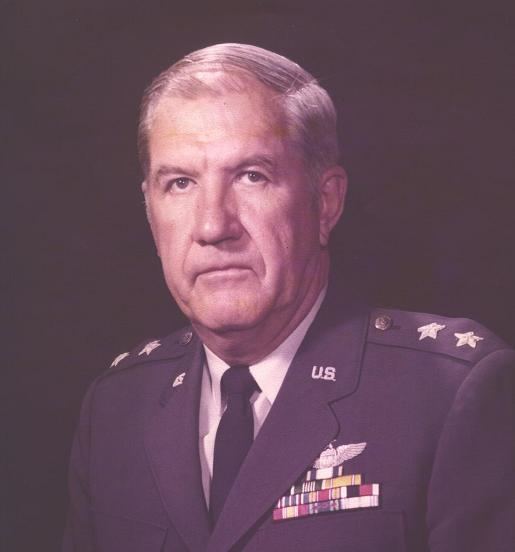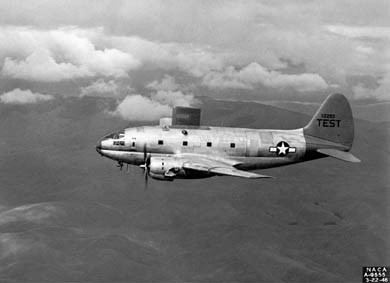Years of service 1940–1975 Rank Major General | Name James Murray Died May 9, 2004 | |
 | ||
Born January 4, 1919Newton, North Carolina ( 1919-01-04 ) Allegiance United States of America Awards Air Force Distinguished Service Medal Books Life Without a Compass: With Revealing Comments about the Decline of the Douglas Aircraft Company | ||
Major General James L. Murray (January 4, 1919 – May 9, 2004) was a United States Air Force officer and Engineering Project Manager for the XB-52 at Wright-Patterson Air Force Base.

Biography
General Murray started his Air Force career as an instructor; his 5,500 hours aloft spanned the era from Stearman PT-13 biplane trainers to the North American F-86 Sabre.
Notable amongst his students were members of the Tuskeegee Airmen 332d Fighter Group(99th Pursuit Group) and aviation author Ernest K. Gann, who referred to him as "a most skillful young Army pilot" in Fate Is the Hunter (page 213.)
From 1945 to 1948, he flew a Curtiss-Wright C-46 Commando flying laboratory on 122 missions to gather icing data as part of the NASA Ames Research Center's effort to develop modern anti-ice systems.
As Chief of the Special Projects Branch of the Aircraft Laboratory at Wright-Patterson Air Force Base from 1948 to 1950, then-Major Murray led the effort to persuade aircraft manufacturers and operational Air Force units to accept the ejection seat as a safe and effective means of escape at high speed. The seat testing took place at Edwards Air Force Base located in Palmdale, California. The seat was attached to a sled that was connected to a stretch of rail road tracks. It was propelled by rockets at a high rate of speed which at the end launched a dummy from the seat with a parachute. When it came time to actually attempt an ejection from an aircraft in flight, Major Murray discovered the seat didn't fit properly in the cockpit of the aircraft that it was designed for, so ultimately the seat chassis was sent to Van Nuys Airport in Los Angeles for modifications. Upon the corrections to the seat it was a "Go". Major Murray was flying in an aircraft next to the test plane. The test plane was flown by a close friend and test pilot. The test pilot began to steer the plane towards the ground and Major Murray witnessed the first ejection from the air. The test rail road tracks are still in existence today at Edwards A.F.B. as a reminder of the profound safety achievement and life saver for pilots.
General Murray survived two plane crashes in his lifetime. The first was before the ejection seat and took place when he was instructing a student that was one of The Tuskeegee Airmen. They were flying in a single-engine, two-seater trainer with a slide-back canopy over Florida. An oil hose broke and they lost engine power. Murray was able to take control of the plane and land it in a swampy field, causing severe damage to the engine and belly of the plane. They were not injured. The second plane crash was when General Murray was an executive for an aerospace company and was aboard the company's business jet as a passenger. The plane began its descent for landing on a very cold winter day in Michigan. General Murray, concerned about an ice buildup, looked out the window over the wing and noticed large sheets of ice on the wings. He quickly notified the pilots, but it was too late. General Murray then observed the ice breaking off of the wings and being sucked into the jet engine intakes. The engines shut down, and the plane had to make an emergency landing on a partially iced-over lake. Upon the plane crashing, it immediately burst into flames. General Murray quickly opened the door and ushered out the pilots and the other executives he was traveling with. The water was now covered in aircraft fuel. The fuel ignited, leaving General Murray no escape. His only option was to dive into the flames that were on top of the water. He suffered burns that were, fortunately, not serious. He said that swimming in the icy waters was the worst of it!
While he was the Engineering Project Manager for the XB-52 at Wright-Patterson Air Force Base from 1951–1952, Lt. Col. Murray worked with future Boeing chairman "T" A. Wilson and many others overseeing the development of the aircraft.
General Murray also worked for a division of Lockheed Skunk Works. He was assigned to the project development of "The Black Missile". This was the first missile that was undetectable by radar. It was being built in a large tan-colored hangar located on the north corner of The Burbank Airport, located in Burbank, California. The hangar was owned by Lockheed Skunk Works Division. It was accessed via San Fernando Rd. This hangar was not the typical hangar. It was larger than normal and heavily guarded. There were no signs of what was really going on there. General Murray worked there daily, entering the door on the west side of the hangar. He explained, upon entering the hangar there was an enormous black curtain that was drawn across the center of the hangar, splitting the work space. He stayed on his side and the other workers stayed on their side. They never saw each other or looked beyond the curtain. General Murray was advised that the other side of the curtain contained a highly classified development, as his project wasn't classified enough. Years later, General Murray discovered what was going on behind the curtain. He was told the first stealth aircraft was in its early stages of development and testing. Murray declined to speak about which aircraft. The hangar was torn down in the year 2002, closing another door to an amazing piece of history.
After being commissioned in the active Air Force Reserve in 1955, Murray eventually retired as a Major General in 1975 with what was known as a "Cosmic Secret" security clearance. He received the high honor of the Air Force Distinguished Service Medal. General Murray held several executive positions in the aerospace industry, among them as vice-president of the C-5 division at the Douglas Aircraft Company, and a 20-year career as president/CEO of Teledyne/CAE, makers of the Boeing Harpoon and Tomahawk missile engine.
September 11, 2001, General Murray was 82 years of age. General Murray, a true patriot watching the aftermath of the attacks unfold on the television, told his youngest son, "If I weren't 82 years old, I would re-enlist and go fight!
General Murray died on May 9, 2004 at the age of 85. His dream was to be buried at Arlington National Cemetery amongst friends and heroes. He was interred in Section 54 of Arlington Cemetery.
